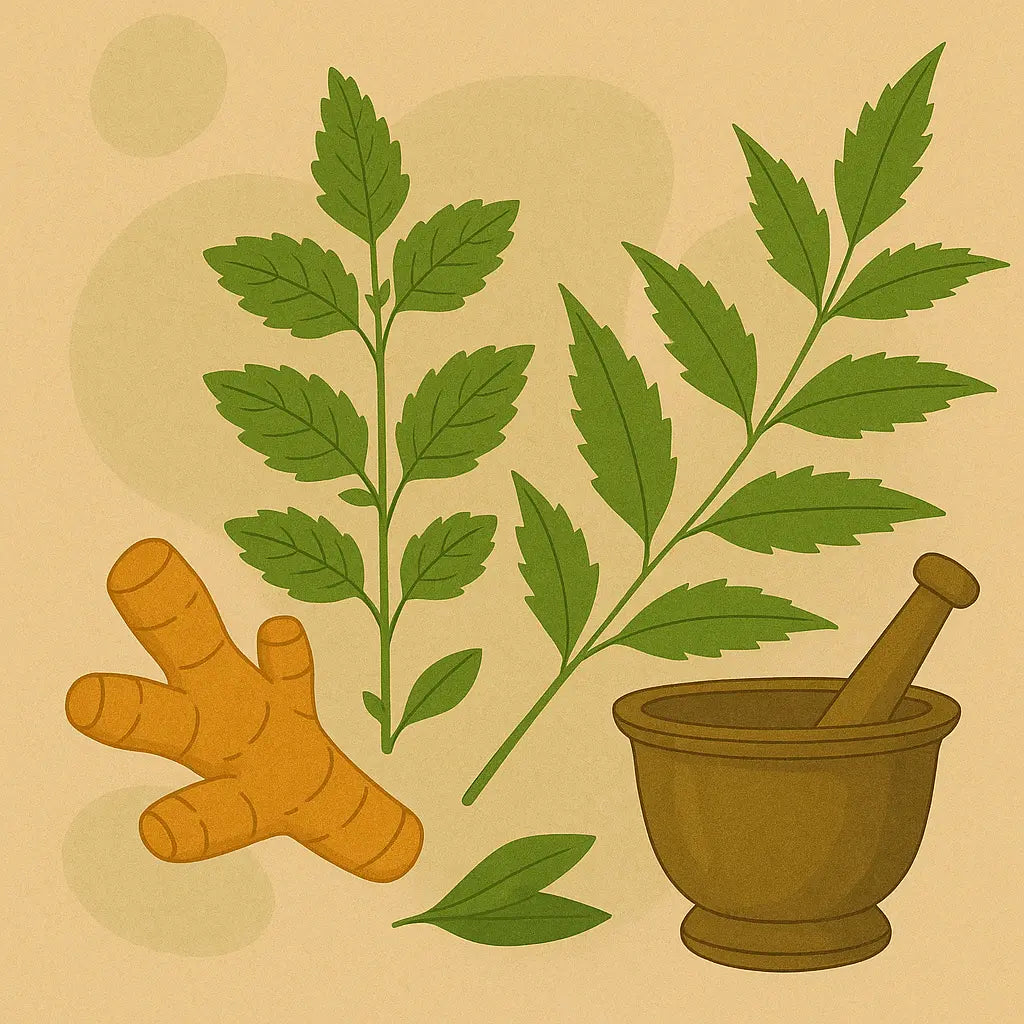
January 08, 2025
What is Ayurveda
Ayurveda, the ancient system of natural healing, has been practiced for thousands of years in India. Its holistic approach to health focuses on balancing the mind, body, and spirit through natural remedies, diet, lifestyle adjustments, and therapies. In this post, we’ll explore the core principles of Ayurveda and how you can incorporate them into your daily routine for a healthier and more balanced life.

Ayurveda, derived from the Sanskrit words Ayu (life) and Veda (knowledge), is the ancient science of life that offers a profound understanding of health and wellness. Rooted in the Vedic traditions of India, Ayurveda views the human body as a microcosm of the universe, governed by the Pancha Mahabhutas (five elements) – Akasha (ether), Vayu (air), Agni (fire), Jala (water), and Prithvi (earth). These elements manifest within the body as three doshas: Vata, Pitta, and Kapha, which regulate all physiological and psychological functions.
The Foundations of Ayurveda
Central to Ayurveda is the concept of Prakriti, an individual’s unique constitution determined at birth, and Vikriti, the current state of imbalance influenced by lifestyle, diet, and environmental factors. The goal of Ayurveda is to restore balance by addressing the root cause of disease, rather than merely alleviating symptoms.
Ayurvedic philosophy emphasizes the inseparable connection between body, mind, and spirit, achieved through a synergy of Ahara (diet), Vihara (lifestyle), and Aushadha (herbal medicine). This holistic approach ensures Swasthya (optimal health), defined in the Sushruta Samhita (one of the Foundational textbooks on Ayurveda) as the equilibrium of doshas, digestive fire (Agni), tissues (Dhatus), and excretory processes (Malas), along with a contented mind, senses, and soul.
Doshas – The Governing Energies
-
Vata Dosha: Composed of Akasha and Vayu, Vata governs movement, communication, and the nervous system. Its qualities (Gunas) are light, dry, and mobile. Imbalance in Vata can lead to anxiety, constipation, and joint disorders. Practices like Abhyanga (oil massage) and warm, grounding foods help pacify Vata.
-
Pitta Dosha: Dominated by Agni and Jala, Pitta regulates metabolism, digestion, and transformation. Its sharp, hot, and oily qualities make it prone to imbalances like inflammation, irritability, and hyperacidity. Cooling herbs like Amalaki and practices such as Sheetali Pranayama are recommended for Pitta balance.
-
Kapha Dosha: Rooted in Prithvi and Jala, Kapha provides structure, stability, and immunity. Its heavy, cold, and sluggish nature can manifest as lethargy, congestion, and obesity when imbalanced. Stimulating activities, light foods, and herbs like Trikatu are beneficial for Kapha pacification.
Key Ayurvedic Principles
-
Agni: The Digestive Fire
Agni, the cornerstone of health, governs digestion and metabolism. Balanced Agni ensures proper assimilation of nutrients, while its derangement leads to Ama (toxins), the root cause of diseases. Ayurvedic treatments often aim to kindle Agni through dietary adjustments and herbal formulations. -
Dinacharya and Ritucharya
Ayurveda emphasizes the importance of aligning with natural rhythms through Dinacharya (daily routine) and Ritucharya (seasonal regimen). Practices such as tongue scraping, oil pulling, and meditation are integral to maintaining doshic balance and preventing disorders. -
Panchakarma: Detoxification and Rejuvenation
Panchakarma, Ayurveda’s detoxification therapy, includes five primary procedures: Vamana (emesis), Virechana(purgation), Basti (enemas), Nasya (nasal administration), and Raktamokshana (bloodletting). These therapies aim to eliminate toxins and rejuvenate the body.
Ayurvedic Treatment Approaches
Ayurvedic treatments are highly individualized, based on the patient’s Prakriti, Vikriti, and the nature of the disorder (Roga). The approach includes:
-
Samshodhana Chikitsa: Detoxification through Panchakarma.
-
Samshamana Chikitsa: Pacification using herbs and lifestyle changes.
-
Rasayana Therapy: Rejuvenation to enhance vitality and immunity.
Commonly used formulations include Chyavanaprasam for vitality, Triphala for digestion, and Ashwagandha for stress relief. Ayurvedic texts also highlight Sattvic Ahara (pure diet) and Satvavajaya (mindful practices) for mental wellness.
Ayurveda offers a timeless guide to achieving and sustaining health by honoring the body’s innate intelligence and its connection to nature. By embracing its principles, one can unlock a harmonious and vibrant life.
 Free & discreet shipping on all prescriptions
Free & discreet shipping on all prescriptions
 No insurance required
No insurance required




